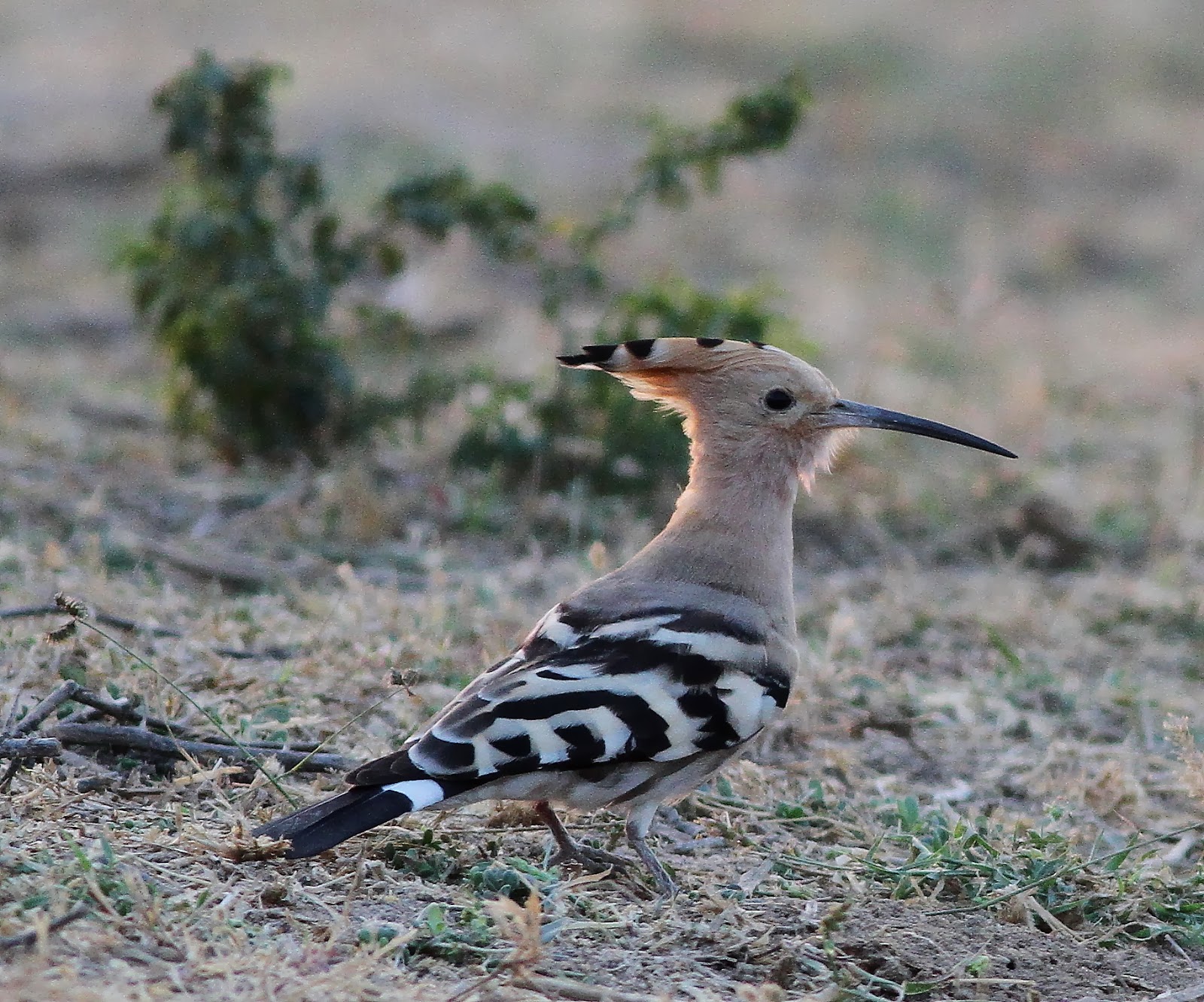The plan for the day was a trip well out into the dried up lake & to be out for most of the day. It was to be a long day & sun glasses were going to be essential to reduce eye strain from the harsh light & dust. It was also a day for harsh lighting & the photos have suffered in some cases.
Life for some of the local kids is pretty basic: But they are all very friendly. Perhaps because Desert Coursers puts money into the local schools
A local villager demonstrating how easy it is to balance things on her head
We stopped by a small well pumping water for the cattle & where there was a small pool by its side. This produced a Grey-necked Bunting & a small party of Bimacs.
This was the only fresh water we saw all day after leaving the village areas
As we carried out into the lake, it got more &
more arid until there was nothing, save a few white painted stones to
act as track markers.
Eventually, we reached a small area of vegetation on a small hill a few metres above the rest of the land. This was like a small island & had a selection of typical bush species & several unphotogenic Sykes's Nightjars.
View from the small hill over a 1/4 mile wide area of dried salt
I generally like to think that my birdwatching hobby has little adverse impact on the wildlife, so was upset when we saw 4 Wild Asses that had walked across this bare lake bed for a mile or two & then across the final 1/4 mile of dried salt. They were almost at our hill, when they stopped as they detected us parked up. After a few minutes of looking & waiting, they turned around & walked back from where they had come. I'm sure they would have coped with the walk much better than I would have done, but I still felt sorry for them.
Wild Asses: Crossing the salt pan
Wild Asses: They stopped about 100 metres out when the sensed our presence
Wild Asses: Unfortunately, they then turned & walked back from where they had come
This is the pick of the birds & other mammals for the day.
Peregrine: This looks like the winter visiting calidus subspecies. Amazing to see this is a totally dried up lake bed with no vegetation for about a mile in any direction. But if a bird came by, it wouldn't be getting away
Hoopoe
Bimaculated Lark: The bulky shape, stout bill, dark streaks on the crown & mantle, pale scapulars, dark eyeline behind the eye, brown cheeks & dark chest patch all help to confirm the identification
Hoopoe
Bimaculated Lark: The bulky shape, stout bill, dark streaks on the crown & mantle, pale scapulars, dark eyeline behind the eye, brown cheeks & dark chest patch all help to confirm the identification




















